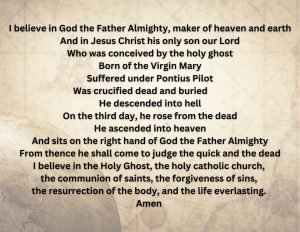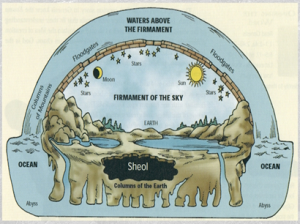Worship on the Lord’s Day
10:00 am 21 July 2024
Online & Onsite (Mixed Presence) Gathering as a Worshipping Community
Minister: The Rev Brad Childs S ervice led by: Lynn Vaughan
Music director: Binu Kapadia Vocalist: Glynnis McCrostie
Elder: Shirley Simpson
We gather to worship God
Music prelude
Greeting
L: The grace of our Lord Jesus Christ be with you.
P: and also with you.
Lighting of the Christ candle
Welcome and announcements
Silent preparation for worship
Call to Worship
L: God asks, “Why have you not attended to my creation and shared the abundance of this world?”
P: God notices the chaos and destruction occurring in the world. We have been scatted and driven apart from each other.
L: Isolation and fear keep us at a distance from each other, and from God.
P: We have drifted from God’s fold in search of creature comforts,
L: only to discover that we have forgotten the promise of God’s provision.
P: The Lord promises to gather the lost and lonely, bringing us back to safety:
L: “I will raise up leaders who will care for my creation and for each other, and they shall know fear no longer.”
P: Sing for joy today as God’s righteousness is at hand, and we are witnesses to God’s justice.
Opening praise: Here I am to worship
Prayers of approach and confession
Giving and Generous God, who created all things and called them good, wee delight in the vast diversity to life.
At your invitation, we gather today for worship and prayer, we gather in awe, that you have called us to care for your creation, as stewards of your world, surrounded by people whose generosity inspires us.
Too often, we are preoccupied by looking after ourselves and caring for others, and we forget that the future is created by actions we take today.
Things we consume and acquire draw us away from your beloved community.
We settle for worldly pleasures and treasures, when you have promised us the power to create, to love, to heal.
Forgive us for so easily squandering these gifts.
Move our hearts, O God. Help us loosen our grip on all we claim to be “mine.”
Open our hearts, Holy Spirit, to receive the gifts and power you offer us. Align our hearts, Christ Jesus, to faithfully steward the creation that is “ours.” Amen
Response: We come to ask you forgiveness, O Lord
Assurance of God’s love
Be not dismayed by what we have left undone or neglected in this lifetime, for we are forgiven. God’s promise is that plans have been made for us; plans that include hope and a future. Hope springs from unexpected places, from the gifts of grace and forgiveness, given and received. As forgiven Children of God, the Love of God flows through us so that we can offer this same gift to others.
We listen for the voice of God
Children’s time
Response: My Lighthouse
Story: A Handful of Love
Good morning, Children of God! Today, I have something to share with you. Can you hold out your hand so I can share a small gift with you? Hold out your hand and let me place something in your palm. (Place one of the small items in each child’s hand.)
Hold your hand out so we can all see what you have in your hand.
Now, what happens to your hand when you say the word “Mine”?
(Many will clench their hand around the item. You may want to demonstrate and see if they copy you. Move your clenched hand to your heart.)
Yes, this is how we often think of things – that they are mine and that I need to hold them tightly and keep them safe. What else do we do to keep things safe?
(Typical responses: hide them, hug them, put them in a drawer, etc.)
Recently, I was looking for something I had hidden away for safe keeping. Of course, by the time I needed it again, I’d completely forgotten where it was … so the treasure I was keeping is still hiding somewhere in my house. Has that ever happened to you? (Receive responses…)
Okay, you still have something in your hand, right? Is it really yours? Where did it come from?
It came from me! But ultimately, it came from, or was made from, God’s creation.
Now, say this with me: Not Mine, But Ours
(Hold your hand where everyone can see it, clench fist on “Mine” and open up your hand on “Ours”. Let adults and children see what you are doing – repeat several times – invite children to join you. Invite congregation to join you.)
How do you feel when you open your hand? (Receive responses…)
Since God is the creator of all things, including these (items), can we really call them “Mine”? Are we to hide and tuck away God’s treasures so that no one can see them?
I want you to think of this as a gift from God that is given to us so that we can share it with others. I shared it with you and now you can share it with someone you love. And they may share it back with you! God’s love is meant to be shared – so thank you for helping me share these gifts – and not hide them away so they can’t be used.
Prayer
Let’s pray together. This is a repeat after me prayer …
Dear God, Thank you for all your gifts.
Thank you for sharing with me.
Thank you for helping me share with others.
Thank you for loving me.
Help me to love others by sharing your love.
Every day.
The Lord’s Prayer (535)
Transition music
Song: Take my life and let it be consecrated, Lord, to Thee (637)
Today’s Message
Scripture: Deuteronomy 10:12-22 & Luke 12:16-21
Response: Thy word is a lamp unto my feet
Message: Yours, Mine, and Ours
The Presbyterian Church in Canada encourages each congregation to focus at least one service during the year on Planned Giving and Legacy gifts. Dayspring has chosen to do that today, as we have recently revived our Stewardship & Planned Giving Task Force after a few years of inactivity. It should not come as a surprise to anyone that we all need to support the church financially, along with our time and talents, IF we want it to thrive and continue to be here for years to come. I have taken a pre-written sermon provided by the national church office and will be presenting that, for the most part, but with a few extra little tidbits of my own thrown in. I understand that this topic can sometimes be a bit of a prickly subject, but here we go …
I read somewhere that most people spend the first half of their lives collecting things and the second half of their lives trying to get rid of things. As I can attest after spending the summer of 2022 cleaning out my mom’s home when she moved out, and even as I look in dismay at my own dumping ground of a house, it appears we do a far better job during the first half of our lives than the second in this regard!
Do you have a piece of furniture that you have been saving – just in case your kids might need it when they finally move out? Or maybe you have a few sets of shoes or socks stashed away – just in case you run out? OR … maybe your dear husband has an entire box (or two!) full of broken shoelaces, ready to go in the event of a natural disaster or some type of emergency. BROKEN shoelaces! Seriously? How are they going to save the day, exactly? (Don’t get me started!?!) But there they are: taking up valuable space in the cupboard.
Have you noticed that we sometimes have so many things stored up that cleaning out our closets feels like Christmas, as we discover items we forgot that we’d even put away? I’ve lost track of how many things I stashed for safe keeping … and then never saw again. They are in my house somewhere – I’m pretty sure!?!
Our consumer culture skillfully motivates us to want more, newer, faster, better. You know what I mean. And yes, this drives our economy, so we just have to play along, right? Consumerism impacts people at all economic levels — it is an equal opportunity addiction! No matter how much we have, we just don’t feel like we have quite enough.
Yes, I said addiction. And this addiction often comes with a powerful word we utter almost unconsciously. I remember with a mixture of awe and dismay when my young children first grabbed hold of a toy and with vigour and conviction uttered that powerful word: “Mine!”
What does our faith say about living a life dedicated to the care and protection of material things? What does our faith say about this idea of “Mine!”?
Today, in our scripture lesson, we heard about a person who is collecting and storing up treasures. He is given the moniker: the Rich Fool. I wonder, and suspect you are wondering, what they were storing these treasures up for? Was it for personal gratification or planning for a rainy day? Some families, communities, and even churches store up resources for a rainy day, and then act as if that rainy day will never come/has never come, even as we wonder how to connect with a community where the message of God is viewed as ancient and irrelevant . . . but that is a sermon for another day. A sermon for Brad to tackle, perhaps.
Back to the person enjoying and feasting on stored-up treasures. Aren’t we all inclined to store up treasures, if we are able? Aren’t we told that good financial planning requires thinking ahead, saving and preparing for a yet-to-be-lived future, especially through these rollercoaster-like times in which we are living? It gets to be very confusing, sorting through all the messages.
So, this person is happy with their accumulated goods. We don’t know exactly what they have accumulated—maybe grain, cloth, jewels, who knows—but we do know that this stored up treasure is the source of great satisfaction and pleasure.
But then, the person learns that they will die that very night! No retirement. No bucket list. It doesn’t seem fair, and yet it is a good reality check.
The past few years have been a jarring reminder that every day is a gift. Whether we are talking about the upheaval of the pandemic, or the chaotic state of global affairs, or whether we are remembering loved ones who have left us too soon, we know that tomorrow is uncertain and our journey home to God can occur at any time. TODAY is all we can be certain of.
What if the calling of a disciple of Christ, as Mahatma Gandhi is credited with saying, is to “live simply so that others may simply live”?
Marie Kondo offers similar wisdom in her 2014 book titled The Life-Changing Magic of Tidying Up. In addition to tips on how to de-clutter your home and organize your schedule, she offers a ritual to offer things back into the cycle of life. Whatever clothing, books or knick-knacks you are ready to give away, she suggests that we simply hold them in our hands and say: “You have served me well—I release you back into creation.” How liberating that could be to free ourselves from objects that fill our drawers, closets and physical space! This can be a radical experience. I think I REALLY need to start doing this more, for my own peace of mind.
A few years ago, a campaign to fight malaria in Africa used this tag line: If anyone has malaria, we all have malaria. This powerful mind shift acknowledges that our needs – and blessings –are not just “MINE” – they are OURS.
Here is one example of how the shift from mine to ours can impact a simple church program.
A minister discovered that benevolence donations were being collected and stored in a church member’s home, to be distributed when needed. While the member felt that the funds were her responsibility to protect, the minister knew that it wasn’t a safe practice for either the church or the individual.
To shift the church’s culture around benevolence funds, the minister bought a small wooden box shaped like a church and placed it in the sanctuary. All were invited to offer gifts into the box as they were able. The collection process became public—it became ours. The minister was astonished to discover some very significant donations in the box shortly after introducing it. By making the discretionary/compassionate/benevolent offering process part of the whole community—it not only became ours— it also grew exponentially!
Today, we honour generosity through planned giving, stewardship and legacy gifts. We celebrate the impact of shifting stewardship of life’s blessings from mine to ours. Whether we are talking about the offerings that we present every week or whether we are referring to legacy gifts that come at the end of one’s life here on earth, the impact it has on the mission and the work done by the church is undeniable.
In today’s parable, we are warned about the temptation to build barns to store what has been accumulated during our lifetime. We don’t know how or why the person in the story became wealthy. It could have been from good luck, possibly hard work or maybe built on the exploitation of others. What we do know is that his actions focused on protecting treasures rather than sharing them.
Financial planners talk about the concept of our “short-term and long-term time horizon”. Are we looking to just get through today or are we thinking about what life could be far into the future? Both scenarios can be equally important, and equally challenging. An example of long-term planning is the person who plants a tree, recognizing that they may never experience its full impact and that they are starting something that will primarily be a blessing to others in the future!
I invite you to think about planned giving as any action that connects our decisions today with the promise of a positive impact on the future. The spiritual gift of generosity through planned gifts is a future blessing, not a short-lived pleasure. It is a way to share the treasures we have built up – from the gifts that God himself has bestowed on us – when we no longer need them.
It doesn’t even take a lot of treasure to bless others. You don’t have to be wealthy to make an impact on future generations. Every gift offered is a step toward a brighter future for someone who needs it.
In the end, what does the Lord require of us? We hear that answer in our Old Testament scripture … to love and serve God with all our hearts and souls. What is important to our God? Executing justice for the orphan and the widow and caring for the stranger. What if we think about how our lives and our estates – whatever is left when we eventually go home to God – care for our community and continue to share God’s love with the world.
Imagine what a different ending Jesus’ parable might have had if the Rich Fool, rather than storing up treasure for personal pleasure, shared even a portion of those resources for the benefit of God’s creation. What if the Rich Fool had left a plan to distribute some of the remaining treasures after this life, to participate in mission works done in God’s name. Jesus could have made mention in his parable to some funds perhaps titled: the Widow and Orphans Feeding Ministry, or the Home for Desert Wanderers, or maybe even the Camel Care and Protection Fund – all founded by the one we know now as the “Wise Planner” rather than the “Rich Fool”.
What will delight your heart and soul in 20, 50, or 100 years from now because it exists—because you planted the seeds of your generosity with a vision for something that could exist in the future? Like an apple tree that bears bushels of fruit in its maturity or the mighty oak that provides needed shade for those during a heat wave, it starts out small like the little acorns you hold in your hands … and grows for years to come!
Rather than barns (or basements, or closets) to store our stuff, what if we shifted our focus to using our gifts as seeds for the future? What might be your legacy?
The empowering message of this parable is that we do not need to settle for barns when we have a future to create! Jesus invites us to see beyond the stuff of this world to the future we are creating in our hearts and minds—a future where hunger, sickness, economic injustice, homelessness and war no longer exist because people have invested in sharing and caring, in equity and security for all persons and in building God’s beloved community.
Are we ready to change our focus from what is MINE to what is possible when we see God’s way, and see the world as OURS? God and the world are waiting for us to choose. May each of us discover the power of generosity in this life! Amen.
Song: We give Thee but Thine own (661)
We respond to serve God: Our time of giving
Reflection on giving: Dayspring is empowered to carry out our mission of worship, service, and care by generously given volunteer time, talent, and treasure. Many thanks to all who give so generously!
God’s goodness fills the world, equip our eyes to see it.
God’s goodness fills the world, inviting our hands to share what God has given us. All our gifts come from God’s goodness. Today we pass that goodness along to others in Jesus’ name.
Prayer of gratitude and for others and ourselves
Abundant God, your giving knows no end.
We thank you for the gift of life. Each breath we have is from you. inspire us to live our lives with hope and purpose and with a desire to respond to your call to follow you.
We thank you for what is known and unknown that abounds throughout your creation – help us to care for such a legacy of beauty and wonder and to work to heal creation where it has been degraded and spoiled.
We give thanks for those who came ahead of us – help us appreciate their gifts of wisdom and knowledge and love passed down to us. And we are grateful for community that is around us: family and friends, strangers, and companions on the journey. Help us unfurl our fingers and open our hands, to move from a mindset of “mine” to “ours” and to give and receive support more generously.
For joy and laughter, for treasured memories and for dreams and plans for the future, we give you thanks.
We thank you for the gifts of those who labour in many ways – in our church, across our communities and around the world – help us to be filled with sincere appreciation and gratitude.
Ever Loving God, you know where the edges in our lives and our world are fraying and where they are strong and resilient. You know the depths of our delights and our sorrows. We come to you in prayer and ask that you look upon us with mercy.
We pray for all those whose burdens and struggles are heavy.
We pray for all people and countries in conflict that they may come to know your justice and be at peace; and that leaders will use their power wisely.
We pray for those who are grieving, mourning, and are bereaved. May each person be lifted on wings of love and hope and receive your healing and comfort.
In Jesus’ name we pray. Amen.
Song: One more step along the world we go (641)
Sending out with God’s blessing
Know that we do not walk this journey alone, for we are always surrounded by the grace of the Lord Jesus Christ, the love of God and the companionship of the Holy Spirit. The Lord bless you and keep you, the Lord be kind and gracious to you, the Lord look upon you with favour, and give you peace.
Response: Go forth into the world
Music postlude
————————————————————————-
Numbers in brackets after a song/hymn indicate that it is from the 1997 Book of Praise of the Presbyterian Church in Canada. Those and other songs are being used in accordance with the specifications of Dayspring’s licensing with One License (3095377) and CLC (A735555).
This 2022 Legacy Sunday worship service was adapted from material written by Bonnie Ives Marden, leadership consultant and financial stewardship practitioner for the Presbyterian Church in Canada. Lynn Vaughan retains the copyright (©2024) on all original material that she prepared. As far as she is aware, all of the other material is her own creation or is in the public domain. Unacknowledged use of copyrighted material is unintentional and will be corrected immediately upon notification being received.












